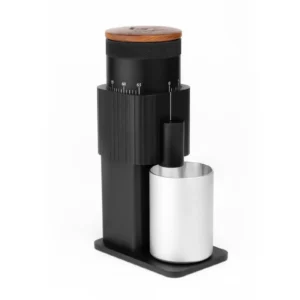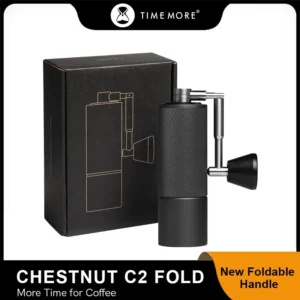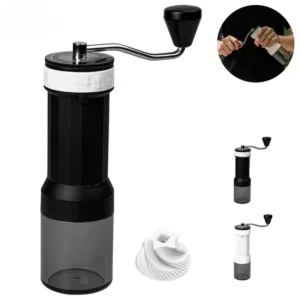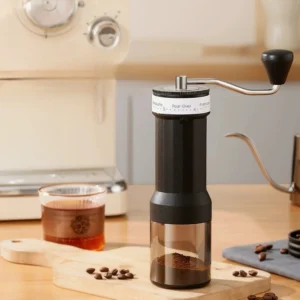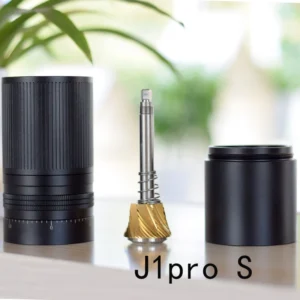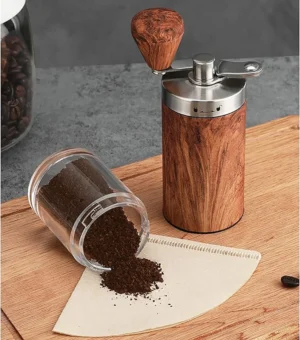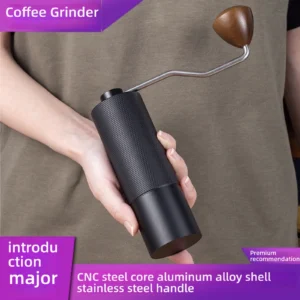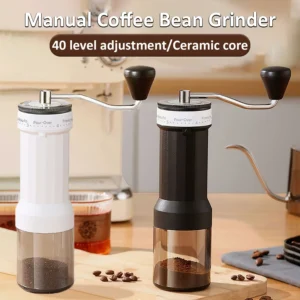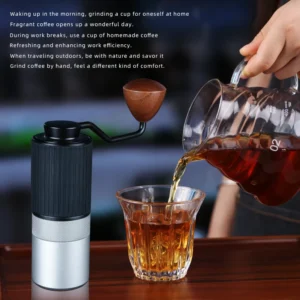Manual Coffee Bean Grinder
Control your coffee, taste the freshness. Our manual grinders offer precise grinding for any brew method, from espresso to French press. Enjoy rich, aromatic coffee daily.
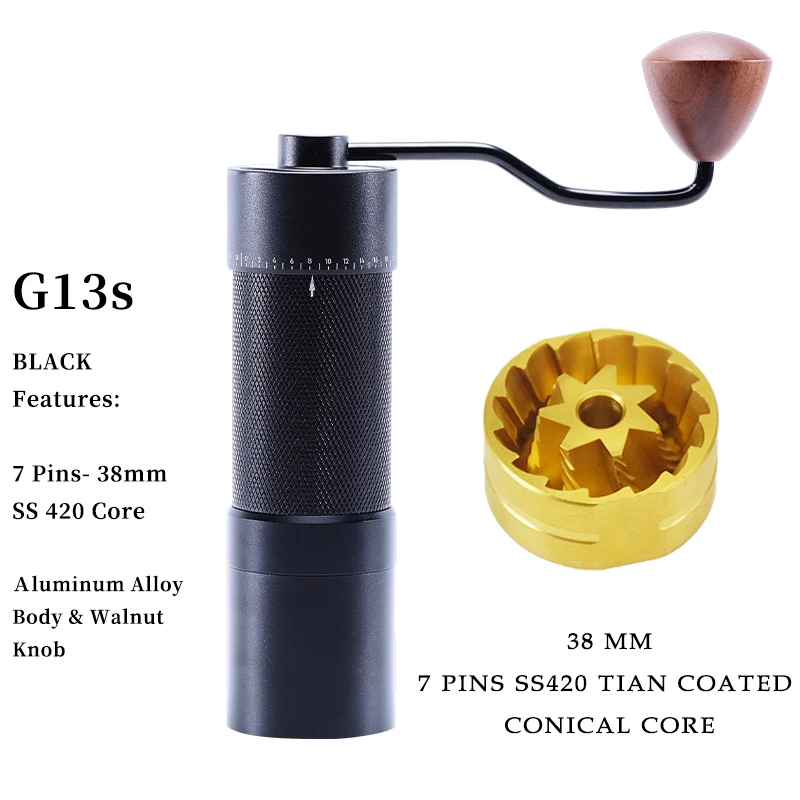
Showing 1–12 of 46 results
Hand Burr Grinder, Handheld Coffee Grinder, Manual Coffee Bean Grinder, Manual Coffee Grinder Stainless Steel
Price range: $681.02 through $681.87 Select options This product has multiple variants. The options may be chosen on the product pageHand Burr Grinder, Manual Coffee Bean Grinder, Manual Coffee Grinder for Espresso, Travel Coffee Grinder
$447.58 Select options This product has multiple variants. The options may be chosen on the product pageCeramic Burr Coffee Grinder, Handheld Coffee Grinder, Manual Coffee Bean Grinder, Manual Coffee Grinder for Espresso
Price range: $61.29 through $63.27 Select options This product has multiple variants. The options may be chosen on the product pageHand Burr Grinder, Manual Coffee Bean Grinder, Manual Coffee Grinder Stainless Steel, Travel Coffee Grinder
Price range: $336.77 through $340.51 Select options This product has multiple variants. The options may be chosen on the product pageCeramic Burr Coffee Grinder, Handheld Coffee Grinder, Manual Coffee Bean Grinder, Manual Coffee Grinder for Espresso
Price range: $99.36 through $99.47 Select options This product has multiple variants. The options may be chosen on the product pageCeramic Burr Coffee Grinder, Hand Crank Coffee Grinder, Handheld Coffee Grinder, Manual Coffee Bean Grinder
Price range: $99.47 through $99.72 Select options This product has multiple variants. The options may be chosen on the product pageCeramic Burr Coffee Grinder, Fine Adjustment Hand Grinder, Manual Coffee Bean Grinder, Manual Coffee Mill Grinder
Price range: $62.70 through $65.28 Select options This product has multiple variants. The options may be chosen on the product pageHand Burr Grinder, Manual Coffee Bean Grinder, Manual Coffee Grinder Stainless Steel, Travel Coffee Grinder
Price range: $263.40 through $271.73 Select options This product has multiple variants. The options may be chosen on the product pageHand Crank Coffee Grinder, Manual Coffee Bean Grinder, Manual Coffee Grinder for Espresso, Manual Coffee Mill Grinder
$63.31 Select options This product has multiple variants. The options may be chosen on the product pageHand Burr Grinder, Manual Burr Mill, Manual Coffee Bean Grinder, Manual Coffee Grinder Stainless Steel
Price range: $90.18 through $94.20 Select options This product has multiple variants. The options may be chosen on the product pageHand Burr Grinder, Handheld Burr Grinder, Manual Coffee Bean Grinder, Travel Coffee Grinder
Price range: $103.93 through $156.20 Select options This product has multiple variants. The options may be chosen on the product pageCeramic Burr Coffee Grinder, Hand Burr Grinder, Hand Crank Coffee Grinder, Manual Coffee Bean Grinder
Price range: $59.17 through $59.96 Select options This product has multiple variants. The options may be chosen on the product page
Showing 1–12 of 46 results
Our Premium Manual Coffee Bean Grinders Collection
The Art of Hand-Ground Coffee Perfection
There exists a profound difference between ordinary coffee and a transcendent brew—often, it’s found in the grind. At Savor Suite, we’ve curated a collection of premium manual coffee grinders that elevate your morning ritual from mundane to magical. Hand grinding is more than a method; it’s a meditation that connects you intimately with your coffee’s journey from bean to cup.
The gentle resistance of beans fracturing between precision-engineered burrs, releasing those complex aromatics that would otherwise remain trapped—this is where exceptional coffee begins. Each turn of the handle unlocks layers of flavor that pre-ground coffee simply cannot preserve. Our collection represents the pinnacle of manual grinding technology, designed for those who understand that patience and precision yield remarkable rewards in your cup.
Why Choose a Manual Coffee Grinder?
Manual coffee grinders occupy a special place in the coffee enthusiast’s arsenal, offering advantages that electric counterparts—especially at comparable price points—simply cannot match:
- Superior consistency: Premium manual grinders often deliver more uniform particle size than electric grinders costing twice as much
- Complete control: Adjust your grind with micrometric precision for everything from silky espresso to textured French press
- Go-anywhere grinding: Compact enough for travel, camping, or office brewing without compromise
- No outlets needed: Perfect for outdoor adventures or minimalist setups
- Peaceful preparation: Experience your morning ritual without the jarring noise of electric motors
- Therapeutic connection: The physical act of grinding creates a moment of mindfulness before your first sip
Beyond these practical benefits, quality manual grinders represent exceptional value. While the initial investment might exceed entry-level electric models, the precision engineering and durable materials in our manual coffee burr grinders often outlast multiple generations of their plugged-in counterparts.
Understanding Burr Types: The Heart of Every Grinder
At the core of every premium manual grinder lies its burr set—the metal or ceramic cutting surfaces that transform your beans into brewable particles. Unlike blade grinders that haphazardly chop beans into inconsistent fragments, burrs crush with precision, creating uniform grounds crucial for even extraction.
Conical burrs, most common in manual grinders, guide beans through an increasingly narrow pathway between two serrated surfaces. These typically offer excellent performance with lower grinding resistance. Flat burrs, though rare in hand grinders, provide extremely consistent results ideal for espresso enthusiasts.
Material choice further influences performance. Steel burrs cut more aggressively and require less effort but may generate slightly more heat. Ceramic burr coffee grinder options offer exceptional durability and temperature stability, preserving delicate aromatics. The finest grinders feature precision-machined burrs with tight tolerances—this engineering precision explains much of the price difference between entry-level and premium models.
Grind Settings & Precision: From Espresso to French Press
The hallmark of an exceptional manual grinder is its ability to deliver consistent particles across a wide spectrum of sizes. Brewing methods demand dramatically different grinds: espresso requires flour-like consistency while French press needs coarse particles resembling sea salt.
Premium precision manual grinder models offer either stepped adjustment mechanisms (with distinct click positions) or stepless systems allowing infinite adjustment. The former provides repeatable settings, while the latter offers uncompromising fine-tuning for espresso perfectionists.
What separates ordinary grinders from extraordinary ones is adjustment precision and range. Superior models offer dozens of distinct settings, with even, predictable increments between each step. This precision ensures you can find the sweet spot for any brewing method, from Turkish coffee’s powder-fine grind to cold brew’s coarse chunky texture.
Materials & Construction: Built to Last
The materials in your manual grinder affect everything from grinding stability to longevity. Premium stainless steel manual coffee grinders minimize unwanted vibration during grinding, resulting in more consistent particle size. These robust bodies resist impacts while providing satisfying heft that anchors the grinder during use.
Beyond performance, premium materials create a sensory experience—the cool touch of brushed steel, the warm patina of aged wood, or the satisfying weight of machined aluminum. Quality grinders also incorporate thoughtful details like silicone grip bands and ergonomic handles that make the grinding process more comfortable.
Superior construction minimizes issues like static build-up and grounds retention, ensuring that you waste none of your precious beans. The investment in quality materials pays dividends not just in grind quality but in the decade-plus lifespan typical of premium manual grinders.
Capacity & Efficiency: Finding Your Perfect Size
Manual grinders typically hold between 20-40 grams of beans—enough for one to three cups of coffee. Smaller models prioritize portability but require multiple refills when brewing for several people. Larger capacity grinders offer convenience for households but may sacrifice some portability.
Grinding efficiency varies significantly between models. Entry-level grinders might require 2-3 minutes of effort for a single espresso dose, while premium models with refined burr geometry and better bearings can reduce this to 30-60 seconds. When selecting your ideal size, consider your typical brewing quantity and the balance between capacity and the effort required for daily use.
Travel & Portability: Grinders for the Coffee Nomad
The ultimate advantage of manual grinders reveals itself when you leave the kitchen behind. A quality portable coffee grinder transforms ordinary travel experiences into extraordinary coffee moments, from mountaintop sunrises to improvised airport brewing sessions.
True travel grinders balance compact dimensions with functional capacity. Features like removable handles, protective cases, and durable construction withstand the rigors of travel while minimizing weight and bulk. Some models cleverly nest within brewing devices like the AeroPress, creating an all-in-one solution for the coffee nomad.
The best travel companions combine minimal weight (under 12 ounces) with maximum durability, ensuring your brewing adventures continue uninterrupted regardless of destination.
Common Questions About Manual Coffee Grinders
Are manual coffee grinders good enough for espresso?
Premium manual coffee grinder for espresso models absolutely deliver espresso-worthy grounds. Look for grinders with precision adjustment mechanisms, minimal burr wobble, and fine-grained settings. While they require more physical effort than electric espresso grinders, the highest-quality manual options produce consistency comparable to commercial equipment costing many times more.
How long does it take to grind coffee manually?
Grinding time varies by model quality and coffee quantity. For a standard 18g espresso dose, expect 45-90 seconds with a premium grinder or 2-3 minutes with entry-level models. Coarser settings for brewing methods like pour-over reduce grinding time significantly. The quality of bearings, burr sharpness, and handle leverage all impact efficiency.
What’s the difference between expensive and budget manual grinders?
The price gap reflects meaningful performance differences. Premium grinders offer precision-machined burrs with tighter tolerances, superior bearing systems that eliminate wobble, more refined adjustment mechanisms, and more durable materials. These elements combine to deliver more consistent particle size, smoother operation, and significantly longer product lifespans—often 10+ years of daily use versus 1-2 years for budget alternatives.


